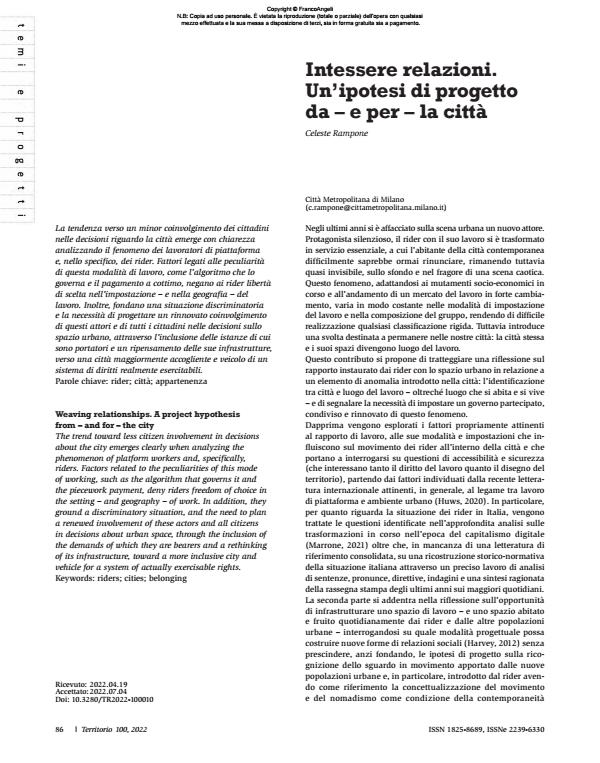Weaving relationships. A project hypothesis from - and for - the city
Journal title TERRITORIO
Author/s Celeste Rampone
Publishing Year 2022 Issue 2022/100
Language Italian Pages 6 P. 86-91 File size 279 KB
DOI 10.3280/TR2022-100010
DOI is like a bar code for intellectual property: to have more infomation
click here
Below, you can see the article first page
If you want to buy this article in PDF format, you can do it, following the instructions to buy download credits

FrancoAngeli is member of Publishers International Linking Association, Inc (PILA), a not-for-profit association which run the CrossRef service enabling links to and from online scholarly content.
The trend toward less citizen involvement in decisions about the city emerges clearly when analyzing the phenomenon of platform workers and, specifically, riders. Factors related to the peculiarities of this mode of working, such as the algorithm that governs it and the piecework payment, deny riders freedom of choice in the setting - and geography - of work. In addition, they ground a discriminatory situation, and the need to plan a renewed involvement of these actors and all citizens in decisions about urban space, through the inclusion of the demands of which they are bearers and a rethinking of its infrastructure, toward a more inclusive city and vehicle for a system of actually exercisable rights.
Keywords: riders; cities; belonging
Celeste Rampone, Intessere relazioni. Un’ipotesi di progetto da - e per - la città in "TERRITORIO" 100/2022, pp 86-91, DOI: 10.3280/TR2022-100010